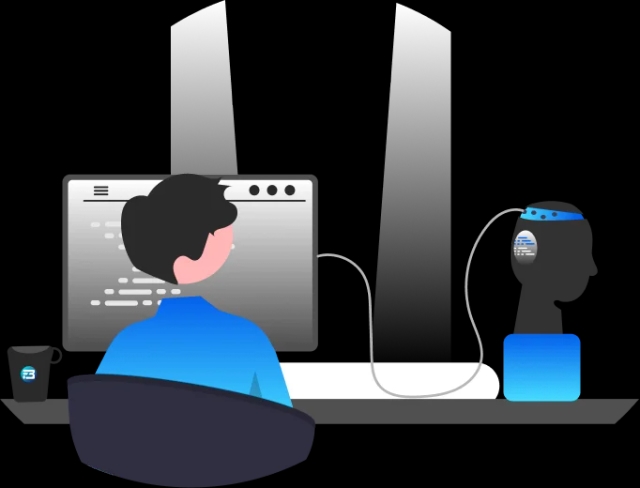Artificial Intelligence
AI dataset
What is artificial intelligence (AI) & how does it comprehend the real world?
What is AI? How is the AI model trained? How do AI comprehend the real world?
Artificial Intelligence
AI dataset
What is AI? How is the AI model trained? How do AI comprehend the real world?

In today's world, "artificial intelligence" is a highly hyped word. Despite its presence for decades, many of us still associate it with fictional films. From voice assistants like Alexa or Siri to machine translation to autonomous vehicles, AI is now part of routine life. According to various studies in the machine learning and artificial intelligence fields, AI will soon surpass human intelligence. Research suggests that in 1–5 decades from now, AI will be capable of mimicking human abilities , from translating languages to performing critical surgery operations.
In this article, we will explore what is artificial intelligence, how it understands the real world, and how AI and ML models are being trained for all those human intelligence-required tasks!
Alan Turing , the founding father of AI, defined artificial intelligence as “the science and engineering of making intelligent machines.”
 Artificial intelligence simply includes building a solution through training a machine-based model to do the tasks that once needed human input and assistance. In other words, artificial intelligence leverages the computational power of machines to mimic human abilities like understanding, problem solving, and decision making!
Artificial intelligence simply includes building a solution through training a machine-based model to do the tasks that once needed human input and assistance. In other words, artificial intelligence leverages the computational power of machines to mimic human abilities like understanding, problem solving, and decision making!
AI machines can be built to do any specific task, which is often referred to as “weak or narrow AI,” or they can be trained to acquire all human abilities like learning, thinking, and taking decisions and become a self-aware machine, which is referred to as “strong AI." Although strong AI in the form of general or super intelligence is still fictional and not fully functional in our day-to-day lives, narrow AI in various forms is.
 We need to take a step back and understand how we humans are trained to do any specific task before we understand how AI is being trained for all this. We humans have a biological powerhouse called the mind and neural network, which gives us the ability to comprehend, solve problems, make decisions, and communicate. In AI, we are trying to replicate this neural network through deep learning.
We need to take a step back and understand how we humans are trained to do any specific task before we understand how AI is being trained for all this. We humans have a biological powerhouse called the mind and neural network, which gives us the ability to comprehend, solve problems, make decisions, and communicate. In AI, we are trying to replicate this neural network through deep learning.
We learn through visualizing information-rich data. Information we get about cats and dogs from teachers, parents, books, and other sources of media paints a clear picture of cats and dogs in our minds. This data-rich information about animals provides us with the intelligence to identify and categorize animals. In this example, as humans, we required accurate data ( images, videos, and audio about cats and dogs ) and a reliable source of information about the data ( teaching which is a cat and which is a dog ) to learn about the object.
The same is true for AI: we must feed structured data to machine learning models in order for them to understand and perform any specific task. Such an AI model is referred to as "supervised AI," which needs labeled data to learn from it. If we want to build a computer vision-based AI model that categorizes cats and dogs, we need to follow the same process. We need to feed labeled image or video data to our machine-learning model to learn from.
Acquiring quality data and annotating it are two very crucial elements of any AI model development process. Here "quality data" refers to data that is in an accurate form and contains all the information in all possible variations to make the model learn and find a pattern from it so that eventually it can predict based on this pattern. Annotation or labeling means making this raw data more informative. In its final form, such an annotated or labeled dataset is often referred to as a "structured dataset." For the dog and cat categorizing model, we need lots of images containing cats and dogs of various types and then annotating them through bounding box annotation, which tells the machine which is dog and which is cat, making the entire dataset structured for our machine learning model.
 Machine learning models being trained on such an extensive, structured dataset can detect and classify dogs and cats in real life as well. So, to answer the question in short, AI understands the real world through labeled forms of data. Although this is not required for all AI model training, some can learn from raw data as well. Such machine learning is called “unsupervised learning.”
Machine learning models being trained on such an extensive, structured dataset can detect and classify dogs and cats in real life as well. So, to answer the question in short, AI understands the real world through labeled forms of data. Although this is not required for all AI model training, some can learn from raw data as well. Such machine learning is called “unsupervised learning.”
The process of AI/ML model training to do any specific task is very similar to training a human kid. The untrained model here looks like a newborn baby. If we briefly divide the entire training process into sections, it looks like this:
1. Data Gathering: We gather all variable information rich data
2. Data preparation: We annotate or label the data and make it structured!
3. Training: We train the model on this data.
4. Validating: We test the trained model and train it again if needed.
5. Serving the real world: Tested model then serve the real world for this specific task.
In reality, the process can be more complex depending on the use case and may contain various other steps in between as well, as it is just a simple flow for understanding. We should also note that each of these steps can be much deeper than it seems, and each of these steps may have its own detailed process. Through this, we are creating an intelligent mind, so the process cannot be so simple. There are so many elements to deal with on each stage to build a robust model that can serve the real world.

But the question here is “how AI is different from any coding-based program?” OR If you code a program saying this image is of a dog and then show that image as input, that can give a result saying this image is of a dog! Then how come both are different phenomena?
Here the word “intelligence” from "artificial intelligence" comes into the picture. Even though we as humans are not trained on all the breeds of cats and dogs that have ever existed in the world, if we encounter any unknown breed of dog, we can most probably identify it as a dog. This is called human intelligence, which enables us to find the pattern from all the information we have in the form of past experience, learn from it, and then predict based on it.
Despite AI being artificial, it is still intelligent, right? Any extensively trained model can do the same! It can find a pattern, learn from it, and solve a task that is unknown to it.
As we incorporate AI into almost every domain, we are becoming increasingly reliant on it. In some use cases that are sensitive in nature, we need to make sure that the AI model is highly efficient and accurate! Taking two different use cases, one being a voice assistant that gives you information about the outside weather, and another being an AI-enabled assistive surgery robot, it is very clear that the second use case is more sensitive. And so, for such sensitive use cases, the training process should be more rigorous and deliver quality and accurate output.
Another reason why extensive training is required is because any AI model may have to deal with various variables that aren't covered in the training process. A user interacts with a healthcare voicebot by saying, “I hurt my foot; what should I do?” If this voice bot is not extensively trained, it can malfunction and get confused if the user is referring to the foot as part of the body or as a unit of measurement! I know it’s a pretty vague example, but I hope you get the idea! Users saying NLP-based general voicebot “I like paneer pizza badly” and “I badly like paneer pizza” are two different emotions, and the AI program may struggle to process it if not trained extensively!
We can note that such malfunctions can be very dangerous in critical domains like healthcare, safety, surveillance, etc. What we mean by "extensive training" is to train the model on each variable and scenario that the AI model has to deal with in real life. The greater the complexity, the more training is required! as simple as that!
Thanks to so much advancement and research happening in the space of AI technologies and computer science, AI is now part of our day-to-day lives. Starting from asking Alexa to pay your bills in your natural language to commanding your air conditioner to set the temperature as per your comfort, it’s all speech & voice recognition AI. Your autonomous vehicle taking you from your home to your office is powered by computer vision AI! You went to a hospital, and the doctor diagnosed your X-ray through computer vision technology and then took you through assistive surgery. It’s all machine learning and deep learning! You are using your phone to click the image of text written in an unfamiliar language and then convert it into your native language. It’s NLP and OCR based on AI! Ranging from playing chess to autonomous UAVs, so many problems are already solved, and the world is becoming more accessible with the use of AI! Almost every home is equipped with AI, and everyone uses AI in day-to-day life, knowingly or unknowingly.
After this brief overview, I can say AI is a lot deeper than this. There are so many things, starting from collecting data to training to testing. Building AI for any specific problem can be a complex process, and you must be aware of the steps you are taking for it.

Collecting structured datasets for any custom problem is where FutureBeeAI can help! Collecting or acquiring datasets is one of the most expensive and time-consuming stages in any AI process. Getting insights from someone like us, experts in this niche, can take you way ahead in scaling your AI journey. No matter you are what phase of your Ai development process you can always get assistance from FutureBeeAI data experts.
Acquiring high-quality AI datasets has never been easier!!!
Get in touch with our AI data expert now!
